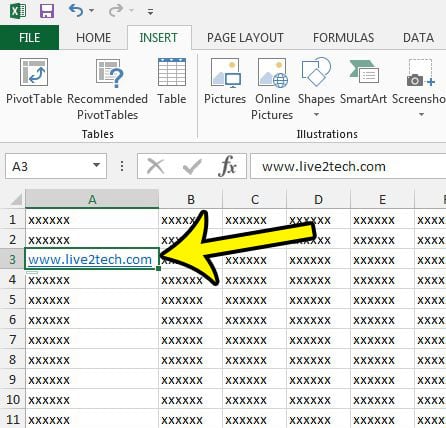

When you successfully complete Assignment 1, you will be given a "completion code", which you can input into the Assignment 1 submission quiz to earn credit for the assignment. You even have a variety of underline styles to choose from under Underline Styles. Font Style Options Set a custom font color under Font Color. Set a custom size of the text under Size. Choose a font style like bold, italics, or regular or more under Font Style. Week 1 will conclude with a required quiz and an on-computer, in-application assignment. Select a custom font under Latin Text Font.
#DIFFERENT WAYS TO UNDERLINE IN EXCEL HOW TO#
You will be introduced to basic macro recording using VBA and you will learn how to set personal preferences in Excel. absolute cell addressing modes and you will learn how to name cells and cell ranges. There will be particular emphasis on relative vs. You will also learn how to format cells, conditionally format cells, and how to change between number, text, date, currency, and other cell formatting options.

You will learn how to move around the worksheet effectively using shortcut key combinations, and you will learn how to edit the worksheet. You will learn the difference between cells, columns, and rows in Excel, as well as cell references. In Week 1, you will learn basic worksheet navigation, how to open and save Excel files, and all about worksheets and workbooks. This course is unique in that the weekly assignments are completed in-application (i.e., on your own computer in Excel), providing you with valuable hands-on training. Text can be formatted in different ways using Bold, Italic, Underline and Strikethrough. How to use Bold, Italic, Underline, Strikethrough formatting in Google Sheets Explanation. Bold, Italic, Underline, Strikethrough - Text Formats. To pass each module, you'll need to pass a mastery quiz and complete a problem solving assignment. I was using an equation field and overline but it adds the line over the ent. The course is organized into 5 Weeks (modules). No prior knowledge in programming nor advanced math skills are necessary. There is more than one way to enter data into an Excel worksheet. New to Excel? That is entirely fine! This course is meant to be fun, thought-provoking, and appeal to a wide audience. In this course (Part 1), you will: 1) learn how to effectively navigate around the Excel environment 2) edit and format Excel worksheets 3) implement basic to advanced Excel functions (including financial, logical, and text functions) 4) learn how to manage data sets (filter, remove duplicates, consolidate data, sort data, and validate data) and 5) learn how to effectively visualize data through scatterplots, column charts, and pie charts.
#DIFFERENT WAYS TO UNDERLINE IN EXCEL SERIES#
This course is the first part of a three-part series and Specialization that focuses on teaching introductory through very advanced techniques and tools in Excel. While this course is meant for beginners of Excel, advanced users will undoubtedly pick up new skills and tools. "Everyday Excel, Part 1" is aimed at learners who are seeking to learn Excel from the ground up.


 0 kommentar(er)
0 kommentar(er)
